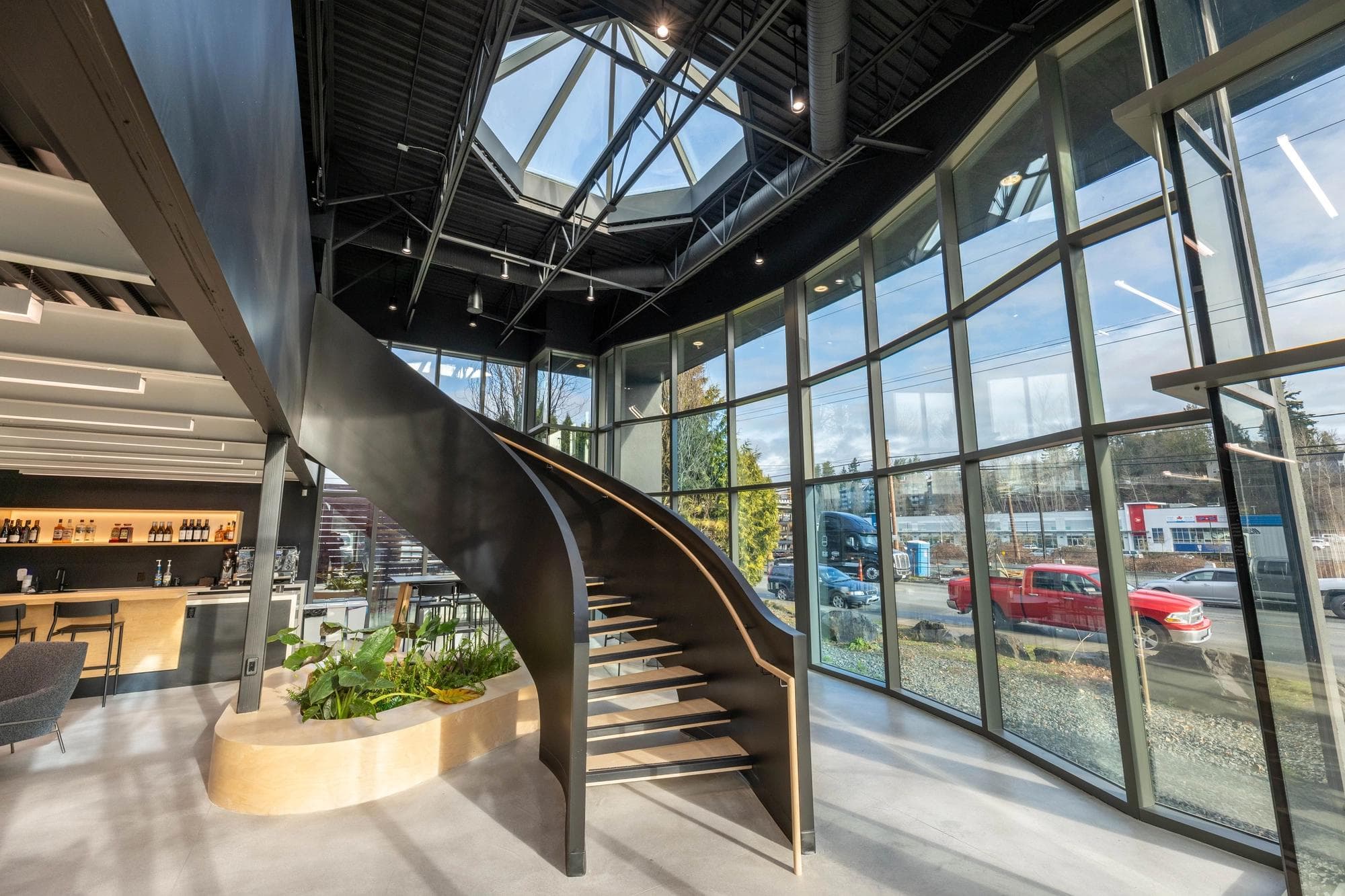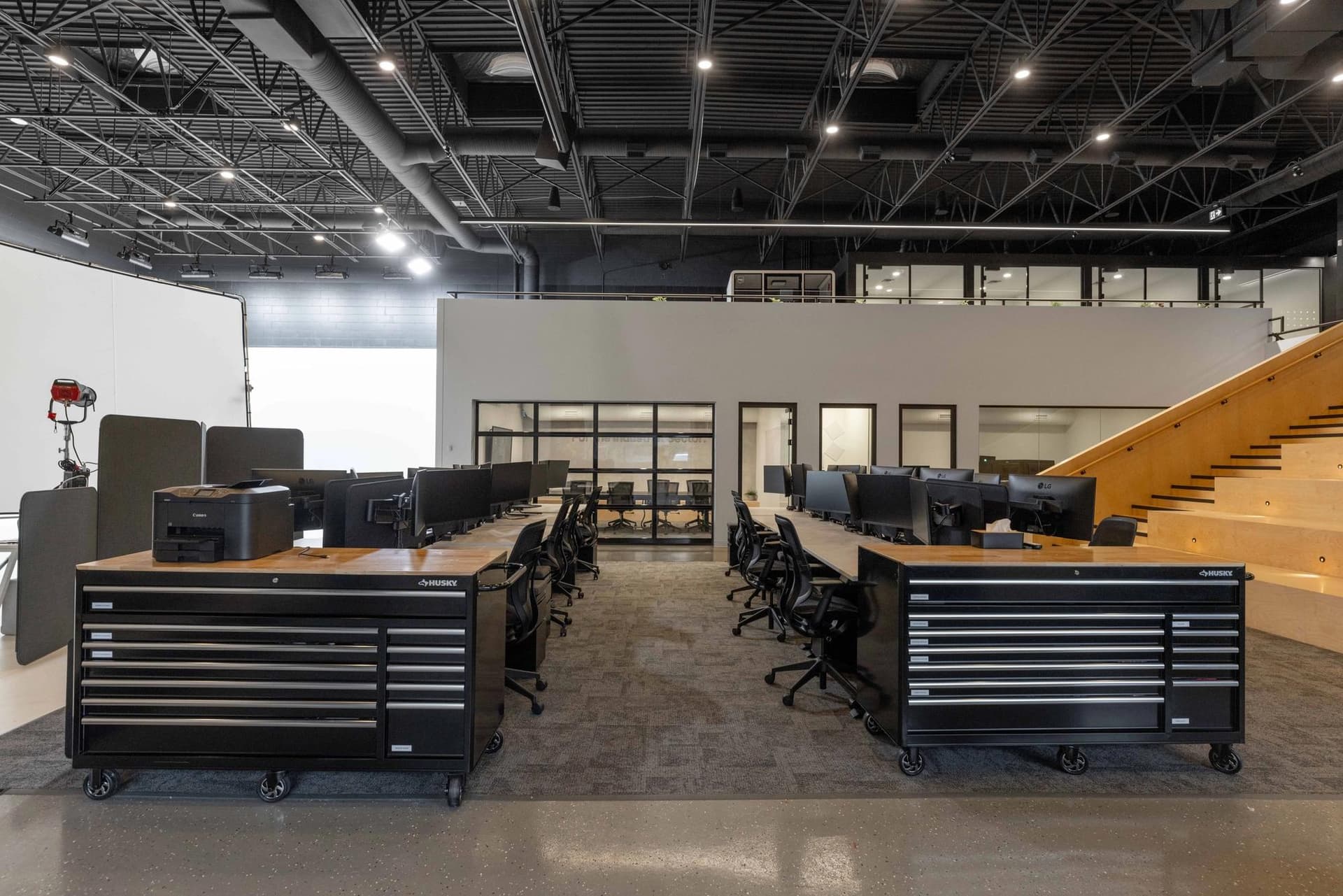The Blueprint for Productivity: Structuring Offices for Healthier Work
A well-designed office space can boost productivity by 20% by incorporating green spaces, flexible zones, and mindful density planning to create environments where creativity flourishes and teams thrive.

Introduction
Designers and architects have been aware of the psychology of design for decades, if not centuries. The relevance of colour theory and the debate between open and closed office spaces are ongoing topics of conversation for organizational psychologists. We see it in corporate logos and fast-food restaurant designs: blue for focus, yellow for creativity, green for peace and red for hunger. When laid out like that, it seems very simply, but the truth is far more complex.
The modern workplace is no longer just a backdrop for tasks; it’s a dynamic ecosystem that shapes how individual employees, teams, and whole organizations think, collaborate and thrive. Gone are the days of isolated cubicles and stifling, forced conversation. Employers want teams who are vibrant, cohesive and creative. Afterall, a well-designed office space can boost productivity by 20% (Source). This means rethinking the office and making the small strategic changes that will empower every employee to balance their own wellbeing with their productivity. This blog post explores how structural choices, namely incorporating green spaces, flexible zones, and mindful density planning can transform workplaces into environments where creativity flourishes and teams thrive.
Incorporate Green Spaces
Living in BC, it’s quite easy to take the beauty around us for granted. We’re blessed with stunning mountain views and lush greenery so being deprived of this natural beauty can leaving employees wishing they could be anywhere else. An effortless way to combat that is to create an office space that fills that psychological need through biophilic design.
Studies show that green spaces provide much needed boosts to creativity and productivity when the mind begins to feel fatigue. Even if every other element of good office design is ignored, “offices that have a view to an external scene were found to positively affect participants, leading to an increase in perceived work quality and less perceived distractions.” (Source) This could mean incorporating potted plants, a garden, or even just having a good view of the outdoors. Being able to see greenery in nature has been proven to reduce cognitive fatigue and improve productivity.

Providing Options for Workspaces
Let’s be honest with ourselves, everybody isn’t invigorated by the idea of coming into the office. Return to office mandates post-covid are proof enough of that. Some people jumped at the opportunity to return, craving the social elements of an office space. Others rejected the notion outright. For some, the office environment is distracting and too rigid, thus reducing productivity. For others, it’s an absolute necessity for keeping up with team members and effectively communicating in real time. It’s a catch-22 for employers, who want to foster formidable team bonds, while also enhancing productivity and focus.
Luckily, there’s a compromise and it lies in autonomy: providing employees with a choice. Offering dedicated workspaces for various purposes helps employees find the space that works for their unique and dynamic needs. Providing quiet workspaces or single occupancy options encourages focus and efficiency. Similarly, multi-occupancy spaces boost creativity and break down the barriers to communication that often slow teams down. Having a designated quiet space encourages concentration, while open office structures give employees the chance to socialize and collaborate with team members in real time.
Spatial vs Social Density
Have you ever had to squeeze into a cramped diner booth where elbows knock into one another, and conversations become chaos? Or sat at a massive conference table, leaving you straining to hear your colleague a seat away? These everyday frustrations encapsulate a critical workplace design challenge: balancing spatial vs social density. Just like a crowded table makes enjoying a meal difficult, so too does having too much social density inhibit productivity. Similarly, too much space leaves people feeling isolated and cold.
So, how do you then go about using this information? Well, there’s a sweet spot for social density? According to recent studies: 32 people per office space is the maximum before it begins to erode productivity (Source). When it comes to spatial distance, there is less evidence to support a single measurement. As such, it’s important to be mindful of the impact of physical proximity as well as social numbers and how they both affect overall employee productivity, focus and wellbeing. Beware of creating too much or not enough distance between employees.
Conclusion
Designing offices of the 21st century means embracing dynamic changes: encouraging employee wellbeing while also facilitating productivity and efficiency. Understanding human nature helps to build workspaces that meet the ever-changing needs of employees. By incorporating greenery into the office, employees can be relieved of the mental fatigue a long workday can cause. Building in autonomy through variety fosters respect for individuals, while also fostering teamwork. Finally, avoiding the pitfalls of over and under-crowding helps to encourage healthy team interactions. Being mindful of these strategies creates work environments where healthy co-working relationships are nurtured and true collaboration can bloom.